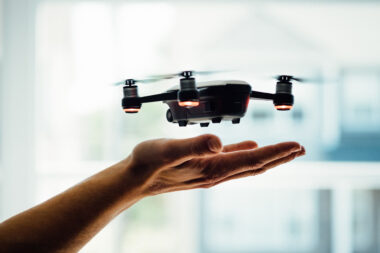The future of urban transportation is poised to take flight, quite literally, with the development of Electric Vertical Takeoff and Landing (EVTOL) aircraft. These innovative electric aircraft are designed to lift off vertically, hover, and land vertically, offering a transformative solution for short distance travel within urban landscapes. In this article, we delve into the development, technology, and potential applications of EVTOL aircraft, exploring how they are set to revolutionize urban air mobility.
The Rise of EVTOL Technology:
EVTOL aircraft are an evolution of traditional vertical takeoff and landing (VTOL) aircraft, but with a key distinction they are powered by electric propulsion systems. This shift to electric power brings numerous advantages, including reduced emissions, lower operational costs, and quieter flight, making EVTOL aircraft an environmentally friendly and sustainable mode of transportation.
Key Technological Features of EVTOL Aircraft:
Electric Propulsion Systems:
Motor Efficiency: EVTOL aircraft are equipped with high efficiency electric motors that convert electrical energy into mechanical propulsion. The choice of electric propulsion enhances overall energy efficiency and reduces the environmental impact compared to traditional combustion engines.
Battery Technology: The heart of EVTOL technology lies in advanced battery systems. These batteries, often lithium ion or other cutting edge chemistries, store and provide the electrical energy needed for flight. Ongoing developments in battery technology are crucial for extending range, improving power density, and enhancing overall performance.
Vertical Takeoff and Landing (VTOL) Capability:
Rotors and Propellers: EVTOL aircraft typically feature multiple rotors or propellers positioned strategically for vertical takeoff and landing. These components provide the necessary lift during takeoff and descent, allowing the aircraft to operate without the need for traditional runways.
Transition to Horizontal Flight: Some EVTOL designs incorporate the ability to transition from vertical to horizontal flight. This transition enhances aerodynamic efficiency during cruise, enabling EVTOL aircraft to cover longer distances with optimal energy usage.
Distributed Electric Propulsion:
Multirotor Configurations: Many EVTOL aircraft utilize a distributed electric propulsion system with multiple rotors distributed across the airframe. This design enhances stability, control, and maneuverability, allowing for precise movements during takeoff, landing, and flight.
Redundancy and Safety: The distributed propulsion system provides redundancy, meaning that if one rotor or motor fails, the aircraft can still maintain controlled flight. This redundancy enhances the safety of EVTOL operations.
Autonomous Flight Systems:
Sensor Integration: EVTOL aircraft are equipped with an array of sensors, including cameras, lidar, radar, and GPS. These sensors contribute to real time data collection, enabling the aircraft to perceive its environment, detect obstacles, and navigate autonomously.
Flight Control Algorithms: Advanced flight control algorithms and artificial intelligence are employed to process sensor data and make real time decisions. These algorithms contribute to the stability, safety, and precision of EVTOL flight, especially during complex urban maneuvers.
Innovative Design and Materials:
Lightweight Materials: EVTOL aircraft often feature lightweight materials, such as carbon composites and aluminum alloys, to optimize weight and maximize efficiency. These materials contribute to the overall agility and energy efficiency of the aircraft.
Aerodynamic Efficiency: Innovative design elements, such as blended wing bodies or distributed lift configurations, enhance aerodynamic efficiency. These designs reduce drag, improve lift to drag ratios, and contribute to the overall performance and range of EVTOL aircraft.
Noise Mitigation Technologies:
Advanced Noise Reduction: EVTOL aircraft developers prioritize noise reduction technologies to address concerns related to urban noise pollution. These technologies may include optimized rotor designs, sound absorbing materials, and quieter electric propulsion systems.
Community Friendly Operations: EVTOL aircraft are designed to operate with minimal noise impact on surrounding communities. This focus on noise mitigation is essential for gaining public acceptance and regulatory approval for urban air mobility.
Energy Management Systems:
Energy Recovery: Some EVTOL designs incorporate energy recovery systems, such as regenerative braking during descent. These systems capture and store energy that can be reused during subsequent phases of flight, improving overall energy efficiency.
Predictive Energy Management: Advanced energy management systems use predictive algorithms to optimize the distribution of electrical power throughout the flight. This ensures efficient energy usage during takeoff, climb, cruise, and descent.
Hardware and Software Requirements for Electric Vertical Takeoff and Landing (EVTOL) Aircraft:
Hardware Components:
Electric Propulsion System:
Electric Motors: High efficiency electric motors are crucial components for EVTOL aircraft. These motors convert electrical energy from the power source (usually batteries) into mechanical energy for propulsion.
Battery Systems: Advanced battery systems, typically lithium ion or next generation chemistries, provide the necessary electrical power for the electric motors. These batteries need to be lightweight, high capacity, and designed for rapid charging and discharging.
Vertical Takeoff and Landing (VTOL) Mechanism:
Rotors/Propellers: EVTOL aircraft are equipped with multiple rotors or propellers arranged strategically for vertical takeoff and landing. The design of these components is crucial for generating lift during VTOL operations.
Mechanical Actuators: Actuators, such as electric servos or hydraulics, control the movement of rotors and propellers, enabling precise adjustments for vertical and horizontal flight modes.
Distributed Electric Propulsion System:
Multiple Motors/Propellers: EVTOL aircraft often feature a distributed electric propulsion system with multiple motors and propellers distributed across the airframe. Each motor contributes to lift and control, providing redundancy for safety.
Power Distribution System: The power distribution system manages the allocation of electrical power from the batteries to each motor. It ensures balanced and synchronized operation for stability and control.
Autonomous Flight Systems:
Sensors: A suite of sensors, including cameras, lidar, radar, inertial measurement units (IMUs), and GPS receivers, is essential for perceiving the aircraft’s environment. These sensors feed data to the autonomous flight control system.
Flight Control Computer: The flight control computer processes sensor data and executes control algorithms to autonomously navigate the aircraft. It governs everything from takeoff and landing to in flight maneuvers and obstacle avoidance.
Innovative Design and Materials:
Lightweight Materials: The airframe of EVTOL aircraft is constructed using lightweight materials such as carbon composites, aluminum alloys, or advanced polymers. These materials enhance structural integrity while minimizing weight.
Aerodynamic Surfaces: Innovative wing designs and aerodynamic surfaces contribute to the overall efficiency and stability of EVTOL aircraft. These surfaces are carefully designed to optimize lift, reduce drag, and ensure maneuverability.
Noise Mitigation Technologies:
Noise Reduction Systems: Hardware components that contribute to noise reduction include optimized rotor designs, sound absorbing materials, and specialized configurations aimed at minimizing the acoustic footprint of EVTOL aircraft.
Community Friendly Components: Design elements focused on noise reduction, such as enclosed rotors or shrouds, are incorporated into EVTOL aircraft hardware to enhance their acceptability in urban environments.
Software Systems:
Flight Control Software:
Control Algorithms: Flight control software implements advanced control algorithms that govern the behavior of the EVTOL aircraft. These algorithms ensure stability, responsiveness, and precise control during various phases of flight.
Autonomous Navigation: Software for autonomous navigation utilizes sensor data to make real time decisions about the aircraft’s position, orientation, and trajectory. It includes path planning algorithms for obstacle avoidance and efficient route optimization.
Energy Management System Software:
Battery Management System (BMS): BMS software monitors and manages the health, charging, and discharging of the battery systems. It ensures safe and efficient use of electrical energy, preventing overcharging or deep discharging.
Energy Optimization Algorithms: Energy management software includes algorithms that optimize the distribution of electrical power throughout the flight. This involves balancing the energy demands of various systems, such as propulsion and avionics, to maximize efficiency.
Autonomous Safety Systems:
Collision Avoidance Software: Autonomous safety systems include collision avoidance software that uses sensor data to detect and respond to potential obstacles in the flight path, ensuring safe navigation.
Emergency Landing Protocols: Software systems are designed to execute emergency landing protocols in the event of system failures or anomalies. These protocols prioritize the safety of occupants and mitigate risks during unexpected situations.
Communication Systems:
Telemetry Software: Telemetry software facilitates communication between the EVTOL aircraft and ground control. It enables real time data transmission, including flight status, sensor readings, and system health updates.
Connectivity Software: Connectivity software ensures seamless communication between different onboard systems, including sensors, avionics, and the flight control system, fostering a cohesive and integrated operational environment.
Maintenance and Diagnostics Software:
Health Monitoring Systems: Maintenance and diagnostics software monitor the health and performance of various components, providing real time feedback to ground crews. This software aids in predictive maintenance and minimizes downtime.
Fault Detection and Analysis: Software systems analyze data from sensors and systems to detect faults or anomalies. This information is critical for diagnosing issues, conducting root cause analysis, and implementing corrective measures.
In the rapidly evolving field of EVTOL aircraft, the integration of cutting edge hardware components and sophisticated software systems is essential for achieving the safety, efficiency, and reliability required for urban air mobility. The synergy between hardware and software is a key factor in realizing the full potential of EVTOL technology.
Potential Applications in Urban Air Mobility:
Short Distance Commuting:
EVTOL aircraft are poised to revolutionize daily commuting by providing a faster and more direct mode of transportation within urban areas. This could significantly reduce commute times and alleviate ground traffic congestion.
Urban Air Taxis:
EVTOL aircraft serve as the backbone of emerging urban air taxi services. Passengers can book a flight through a mobile app, and these electric aircraft can transport them directly to their destination, avoiding traffic on the ground.
Emergency Medical Services:
The vertical takeoff and landing capabilities of EVTOL aircraft make them well suited for emergency medical services. They can quickly transport medical personnel and equipment to locations that may be challenging to reach by traditional means.
Aerial Ridesharing:
EVTOL platforms may be integrated into aerial ridesharing services, offering a novel and efficient way for individuals to share flights and reduce the overall environmental impact of transportation.
Connectivity between Transportation Hubs:
EVTOL aircraft could connect transportation hubs, such as airports and train stations, providing seamless integration between different modes of transportation and enhancing overall urban mobility.
Challenges and Considerations:
While the promise of EVTOL technology is substantial, several challenges need to be addressed for widespread adoption. These include regulatory frameworks, infrastructure development, noise considerations, and public acceptance. Overcoming these challenges is essential to realizing the full potential of EVTOL aircraft in urban air mobility.
Electric Vertical Takeoff and Landing (EVTOL) aircraft represent a paradigm shift in urban air mobility, promising a future where the skies are as accessible as the streets. The development of EVTOL technology opens up new possibilities for efficient, sustainable, and on-demand transportation within urban environments. As advancements continue and regulatory frameworks evolve, EVTOL aircraft are set to play a pivotal role in shaping the future of short distance travel, offering a dynamic and transformative addition to the urban transportation landscape.



